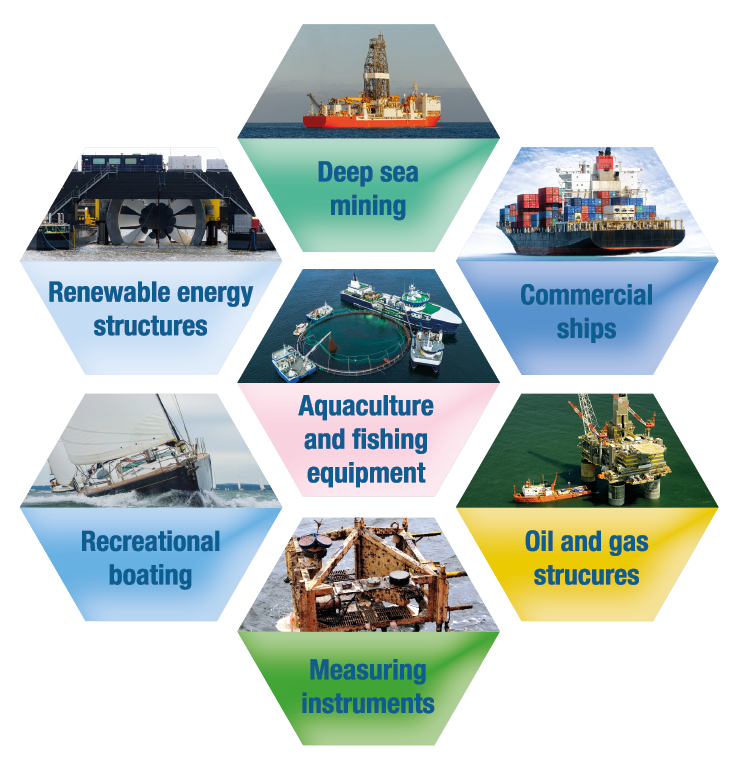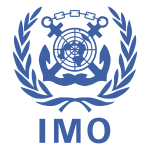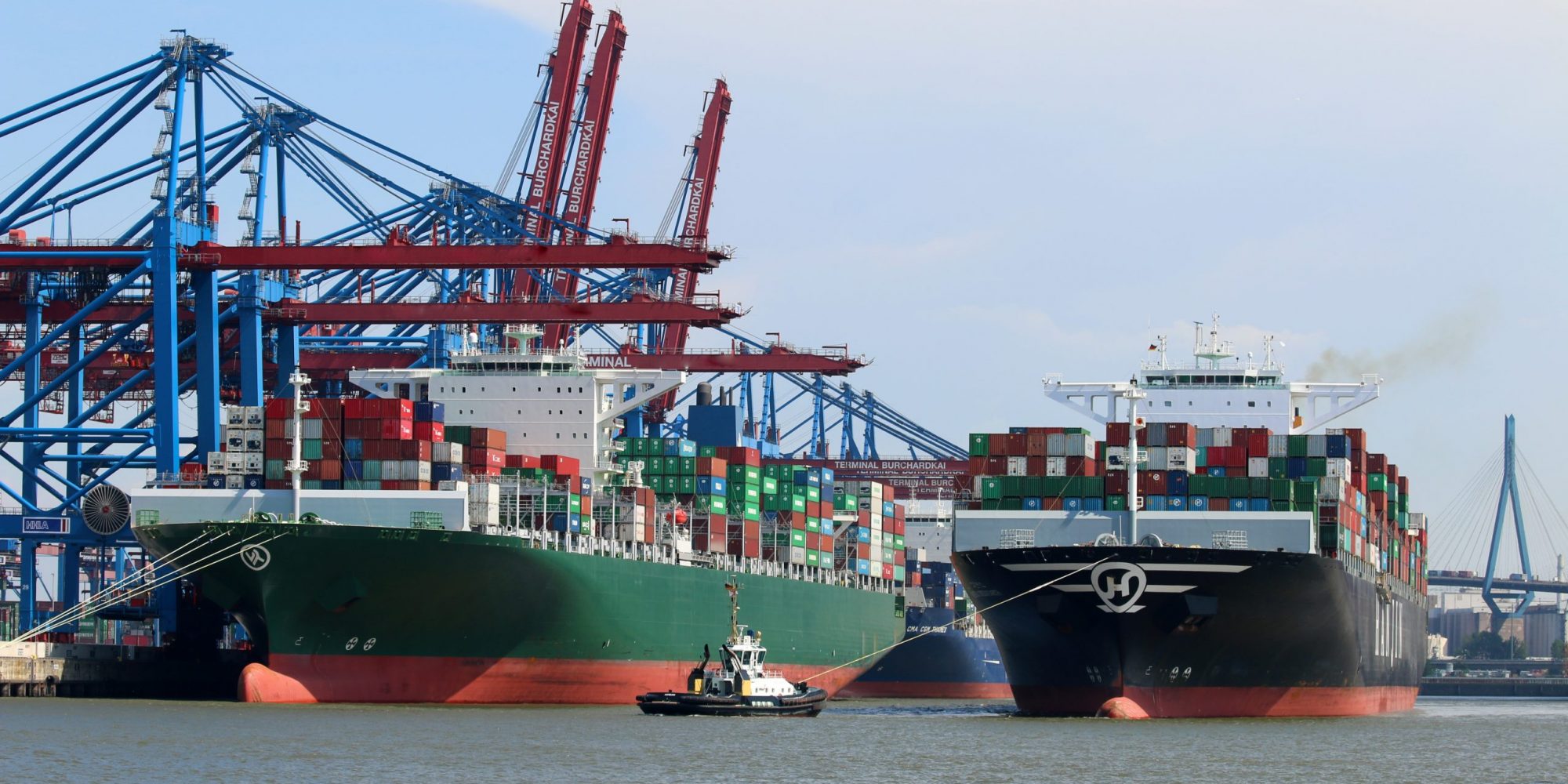
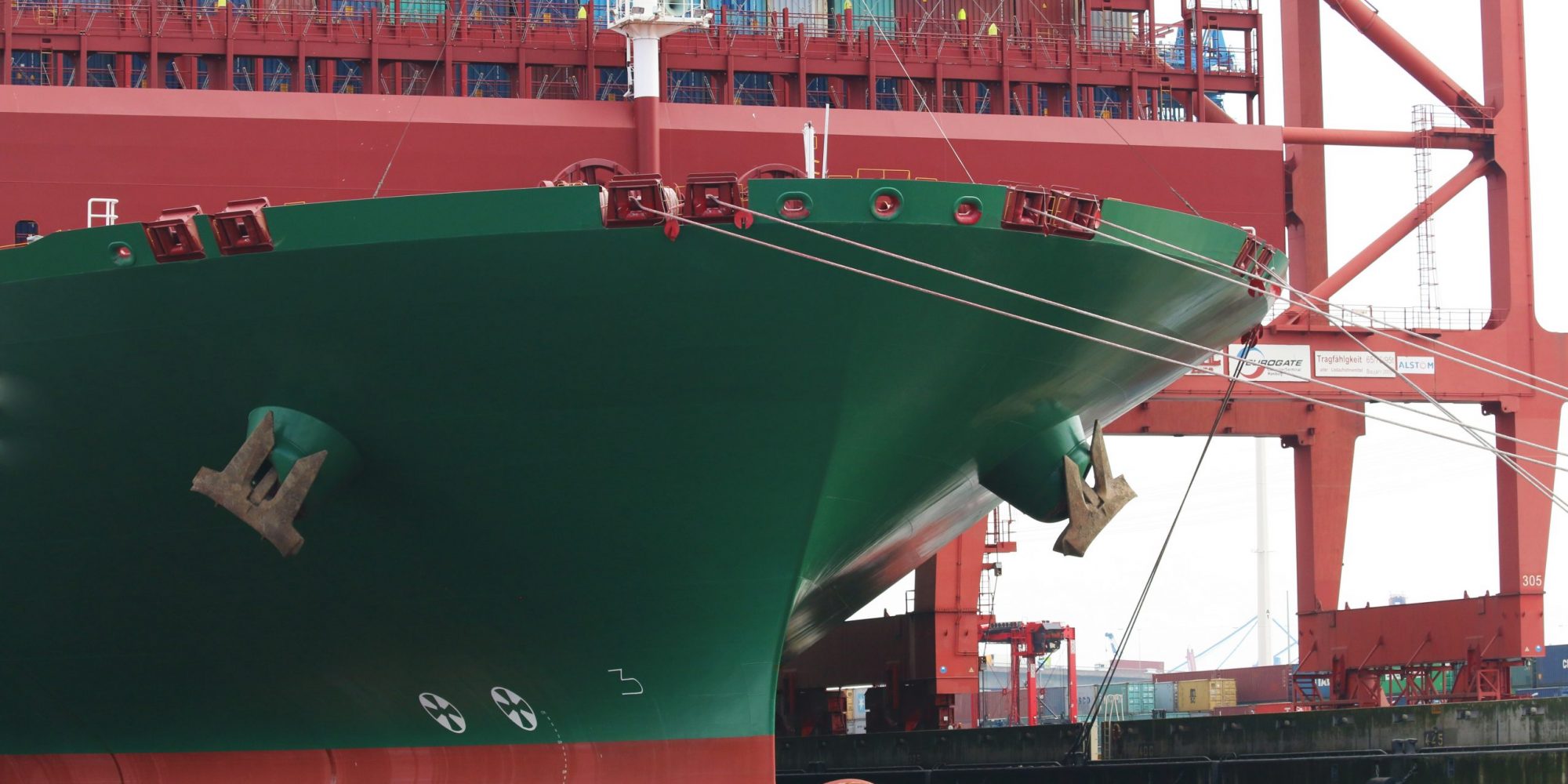
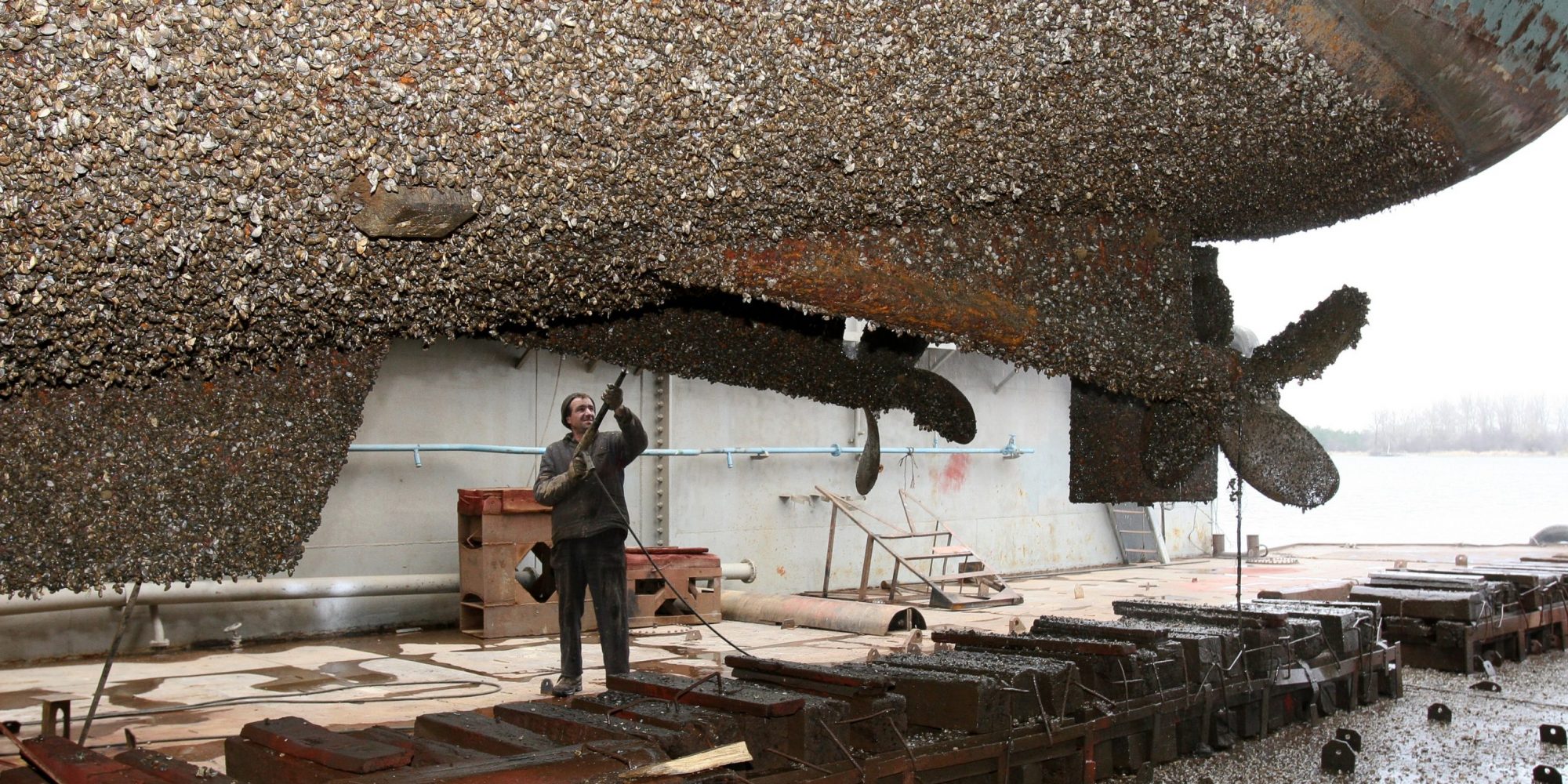
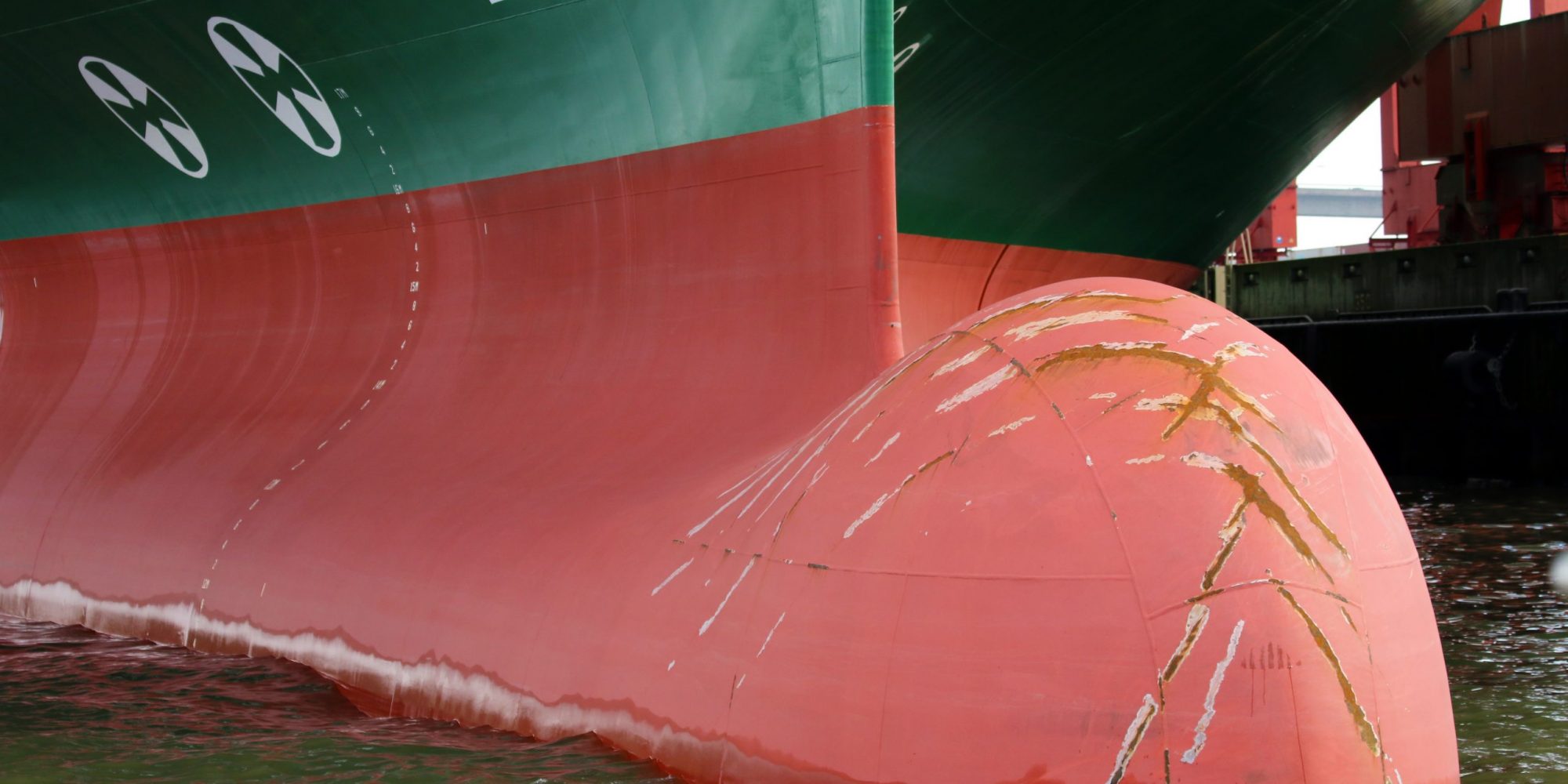
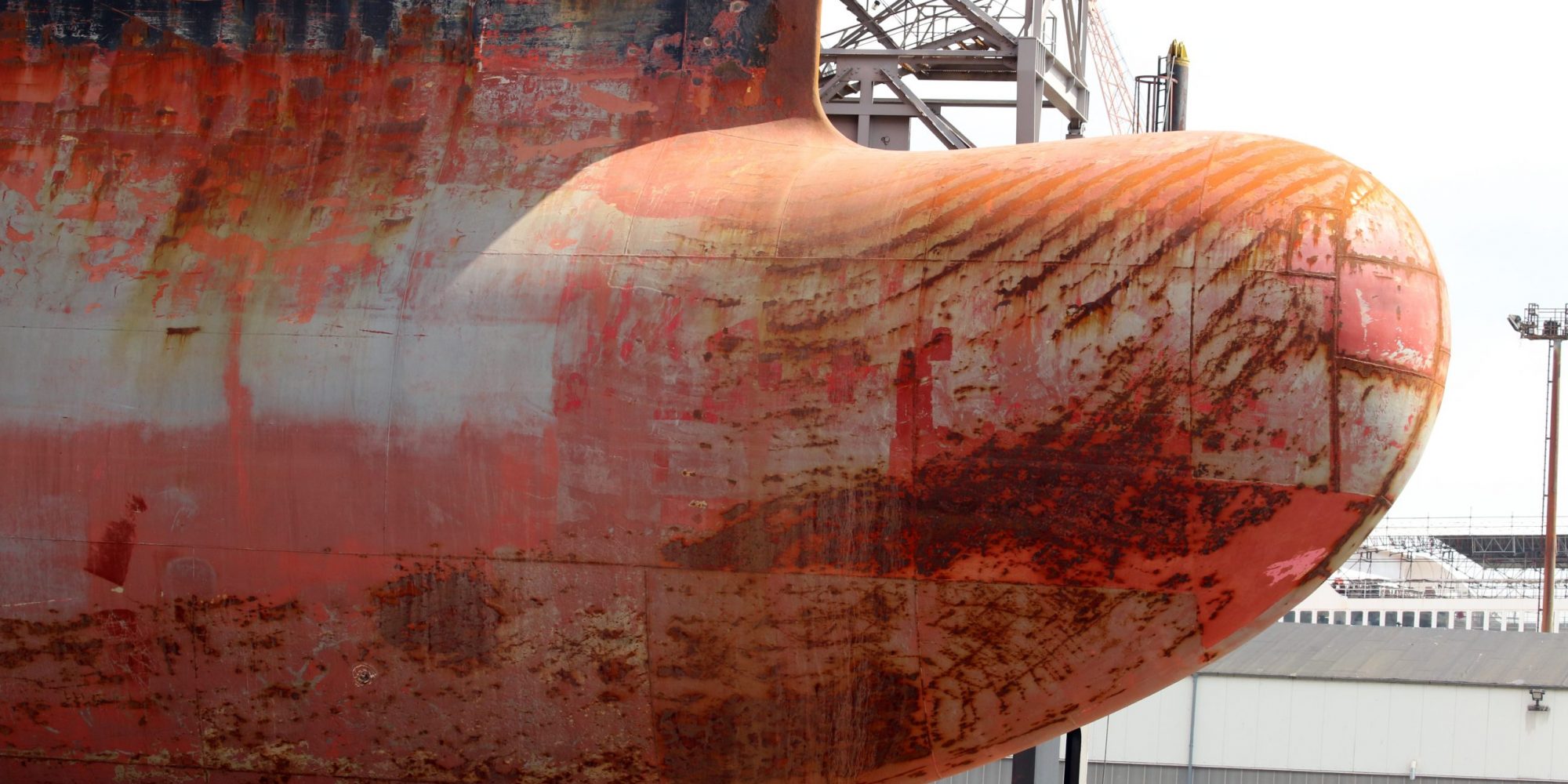
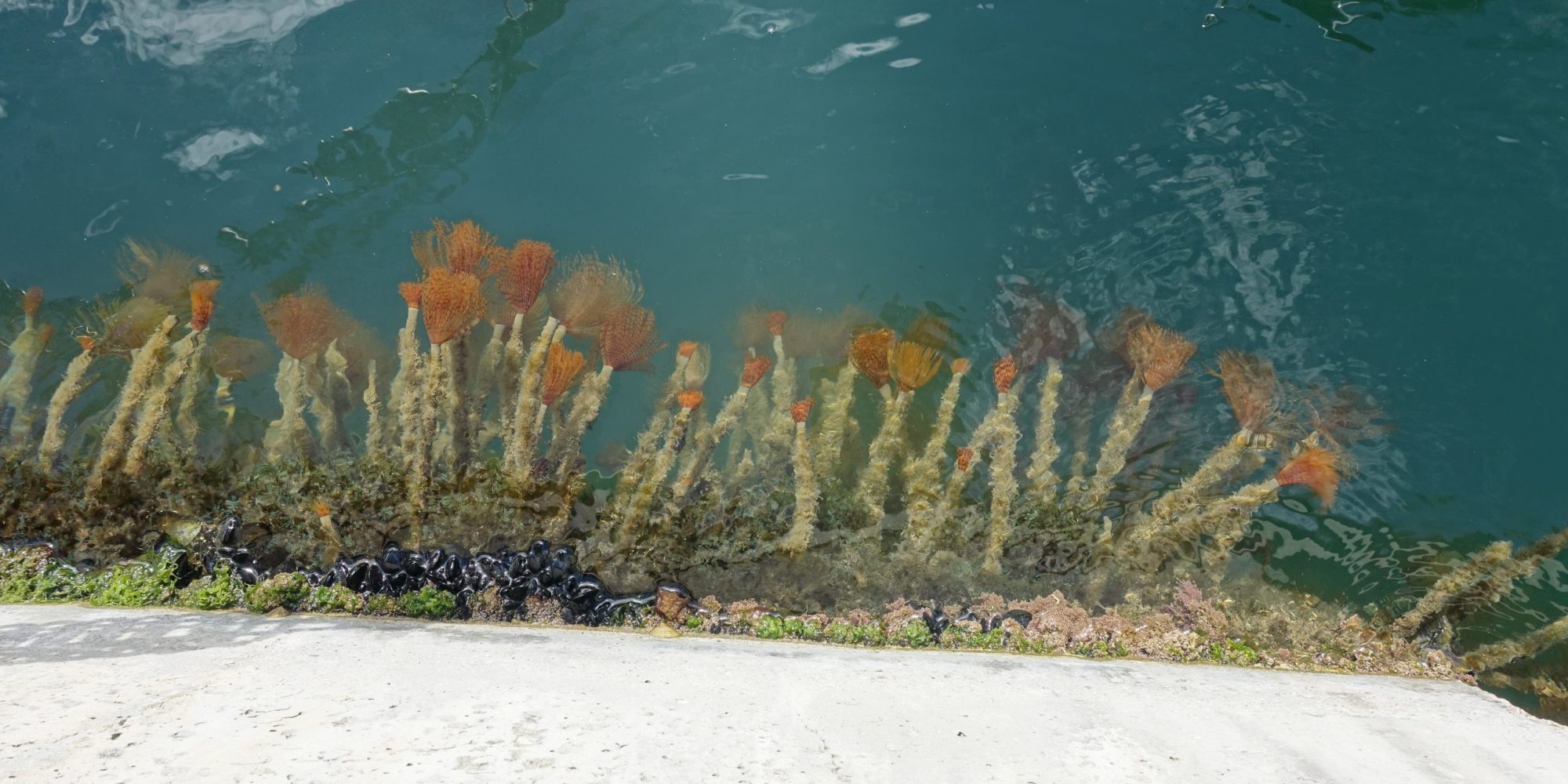
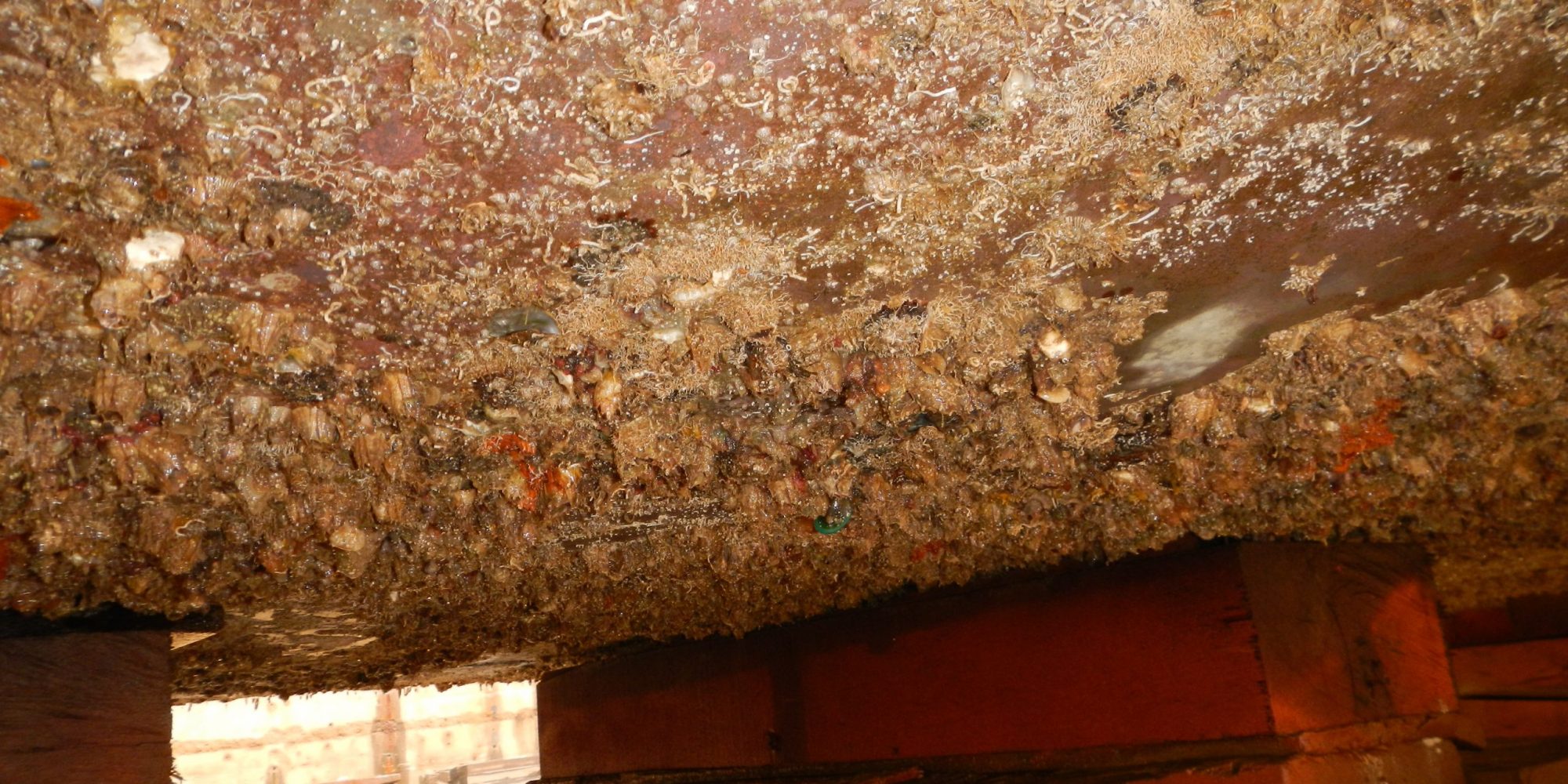
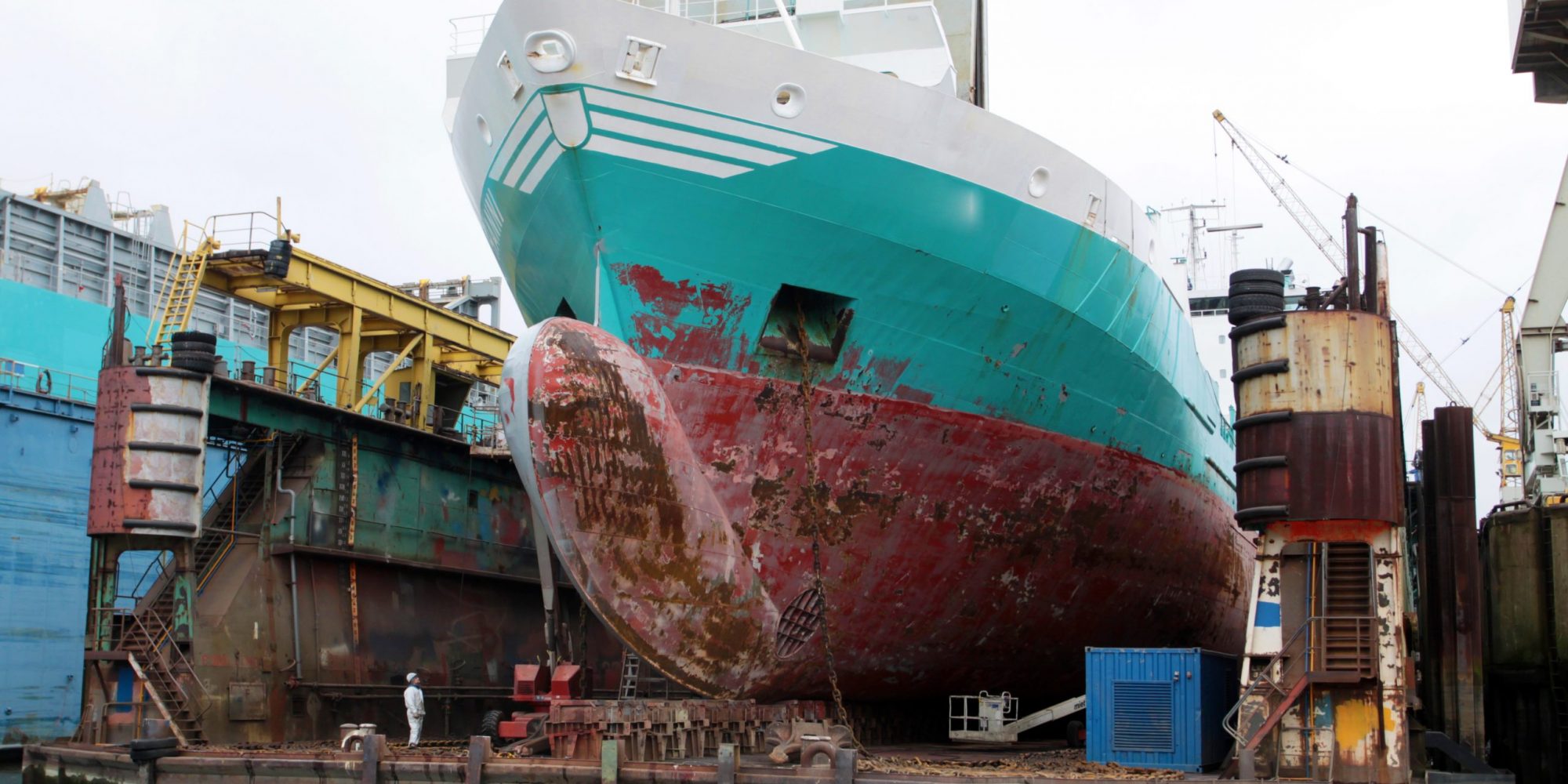
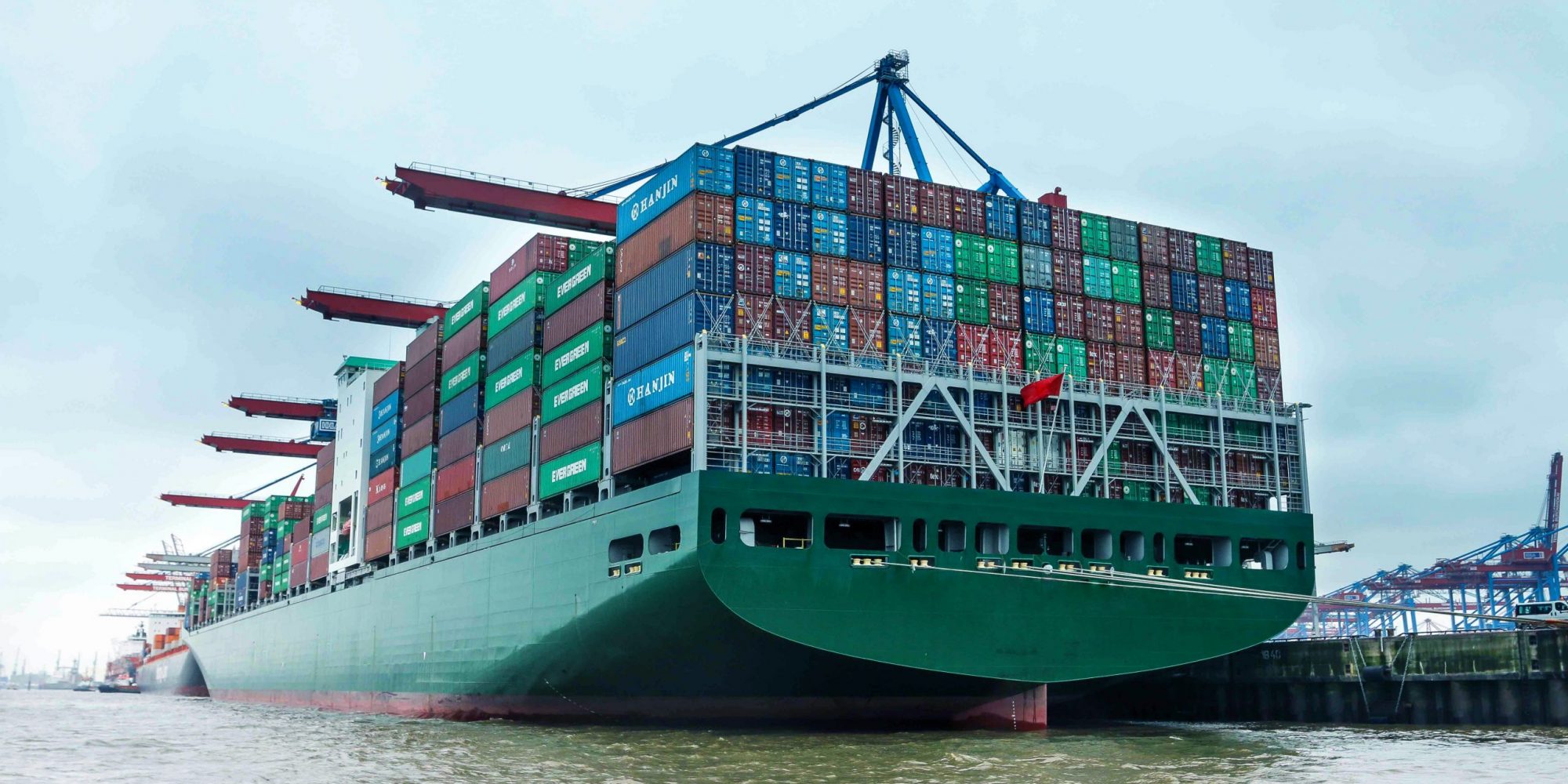
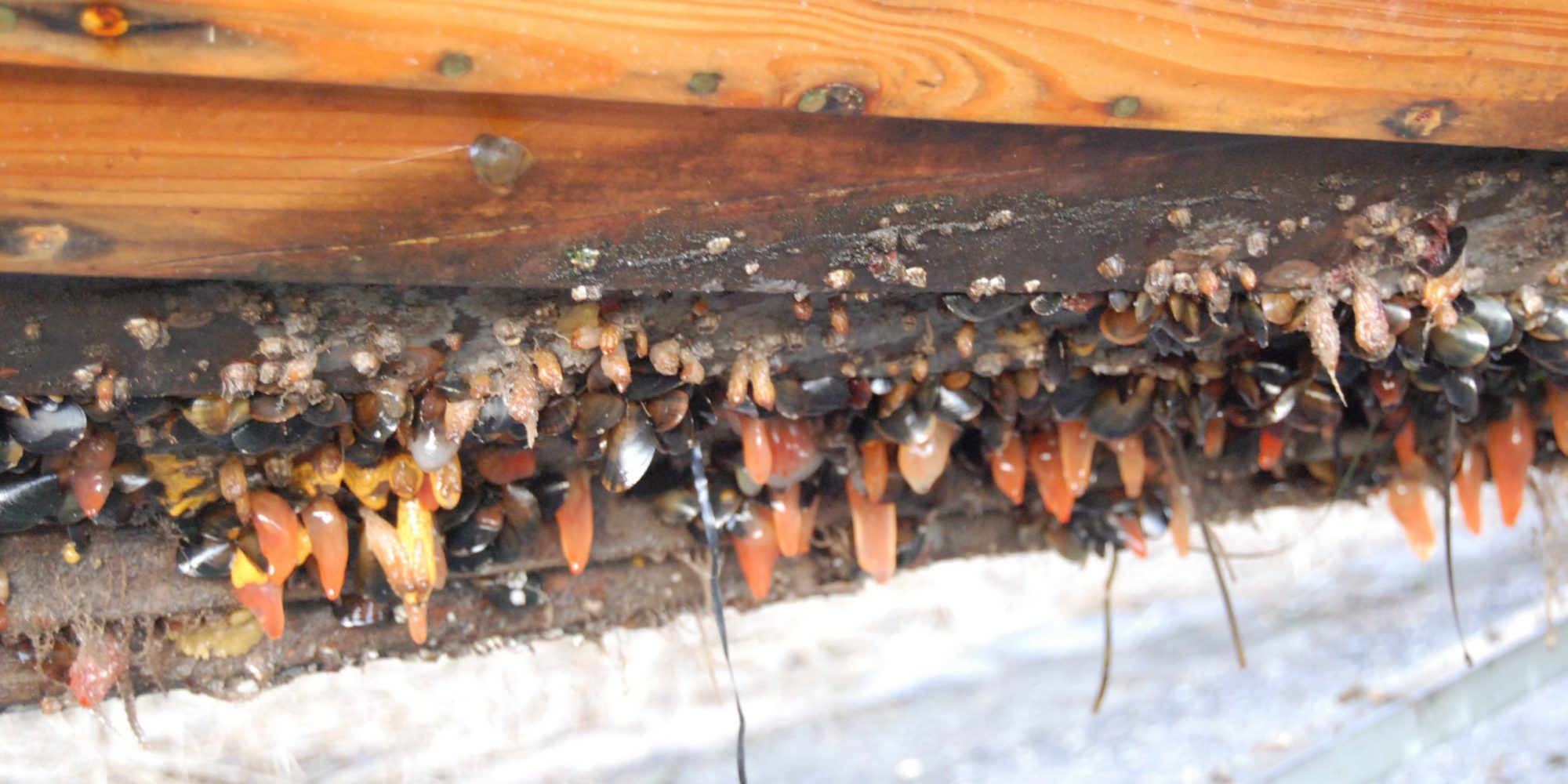
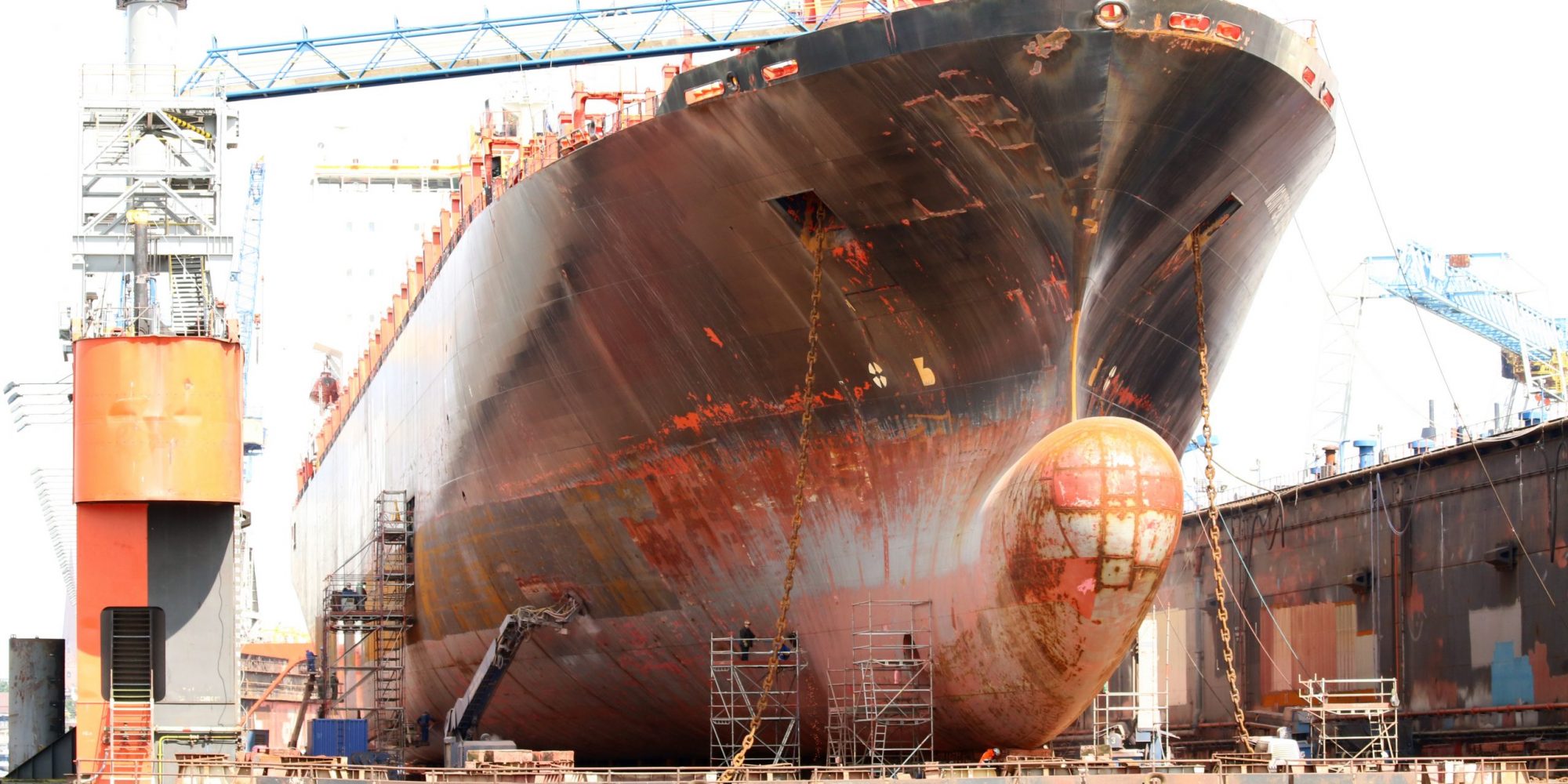
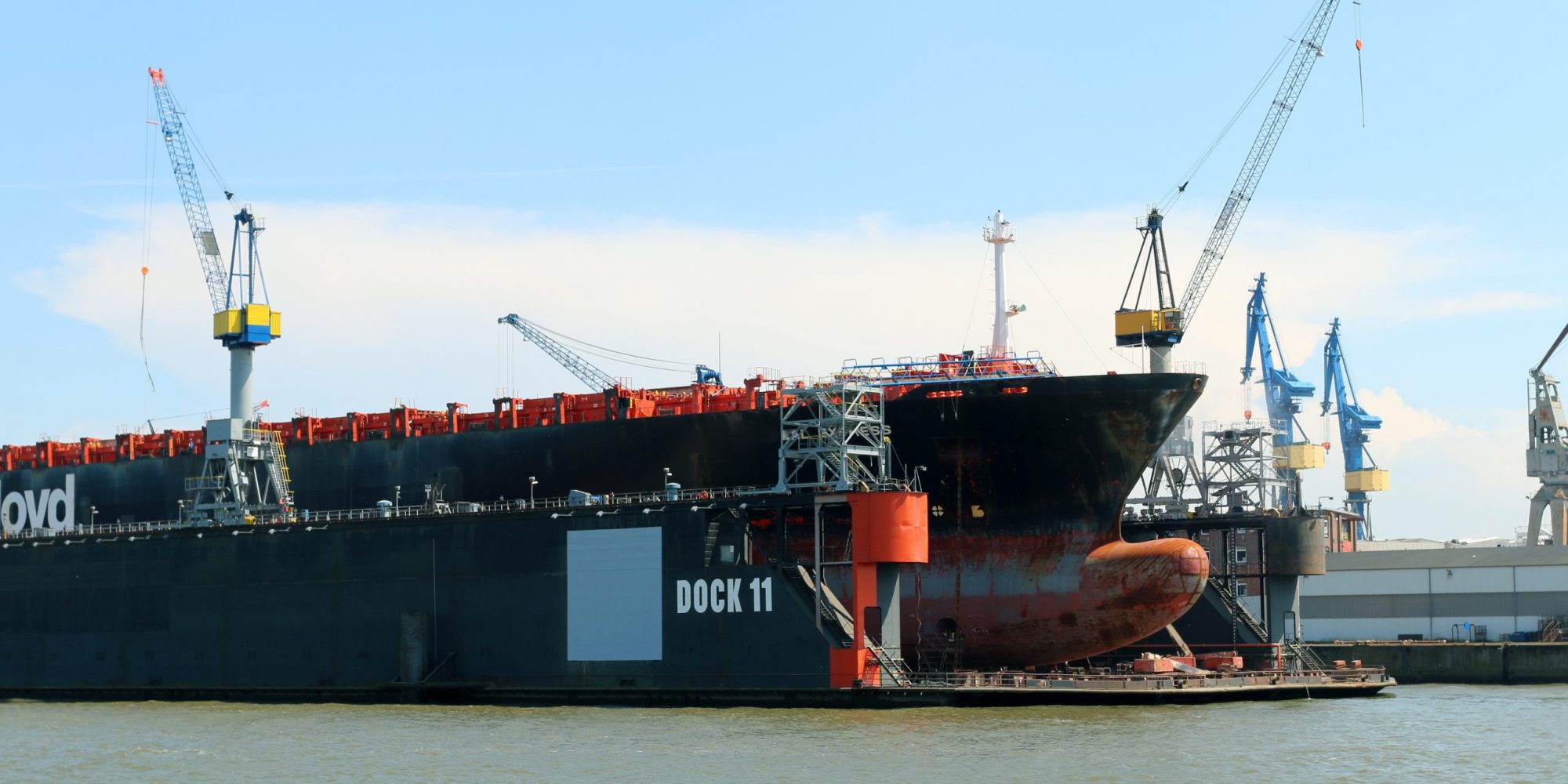
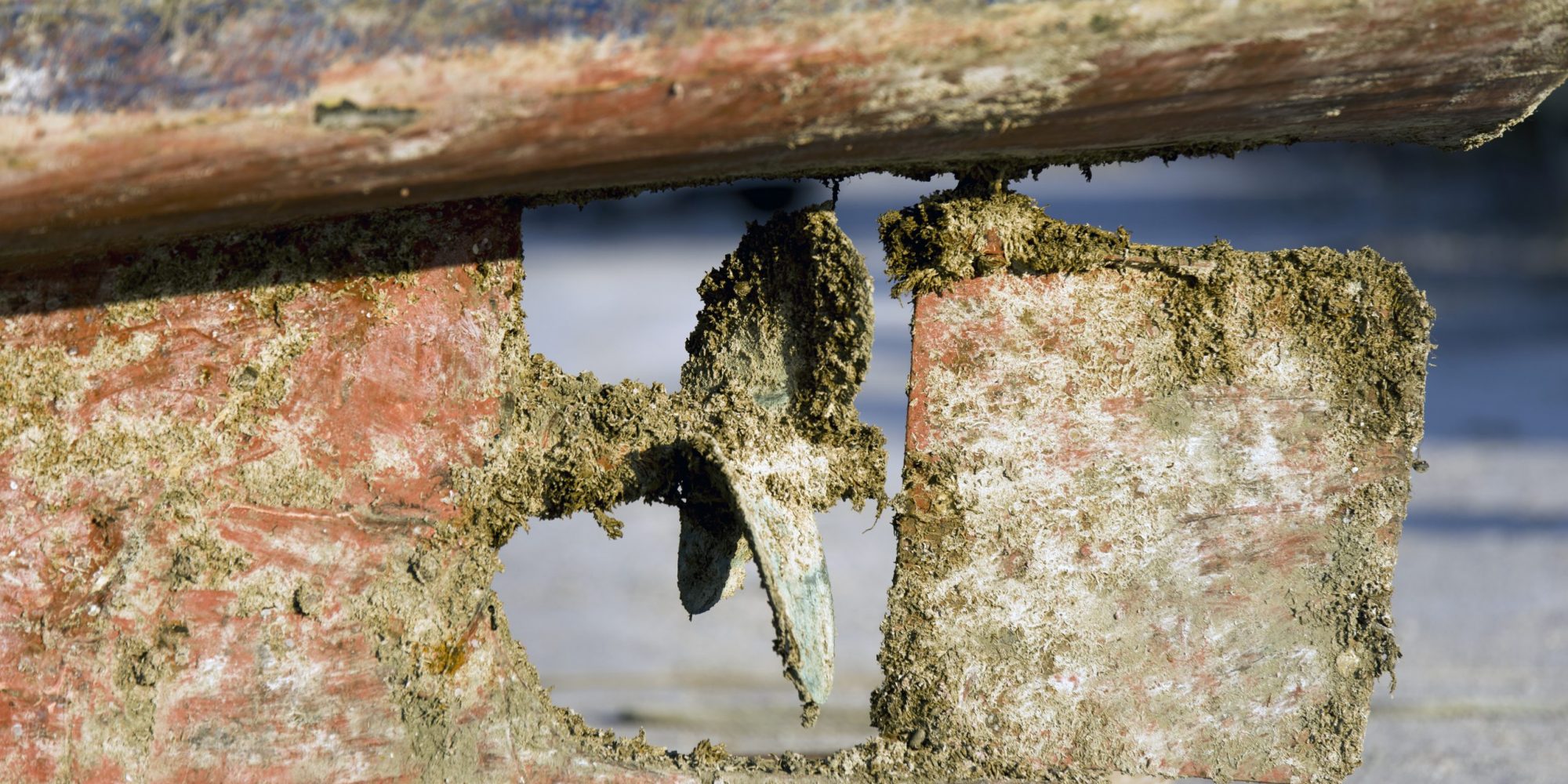
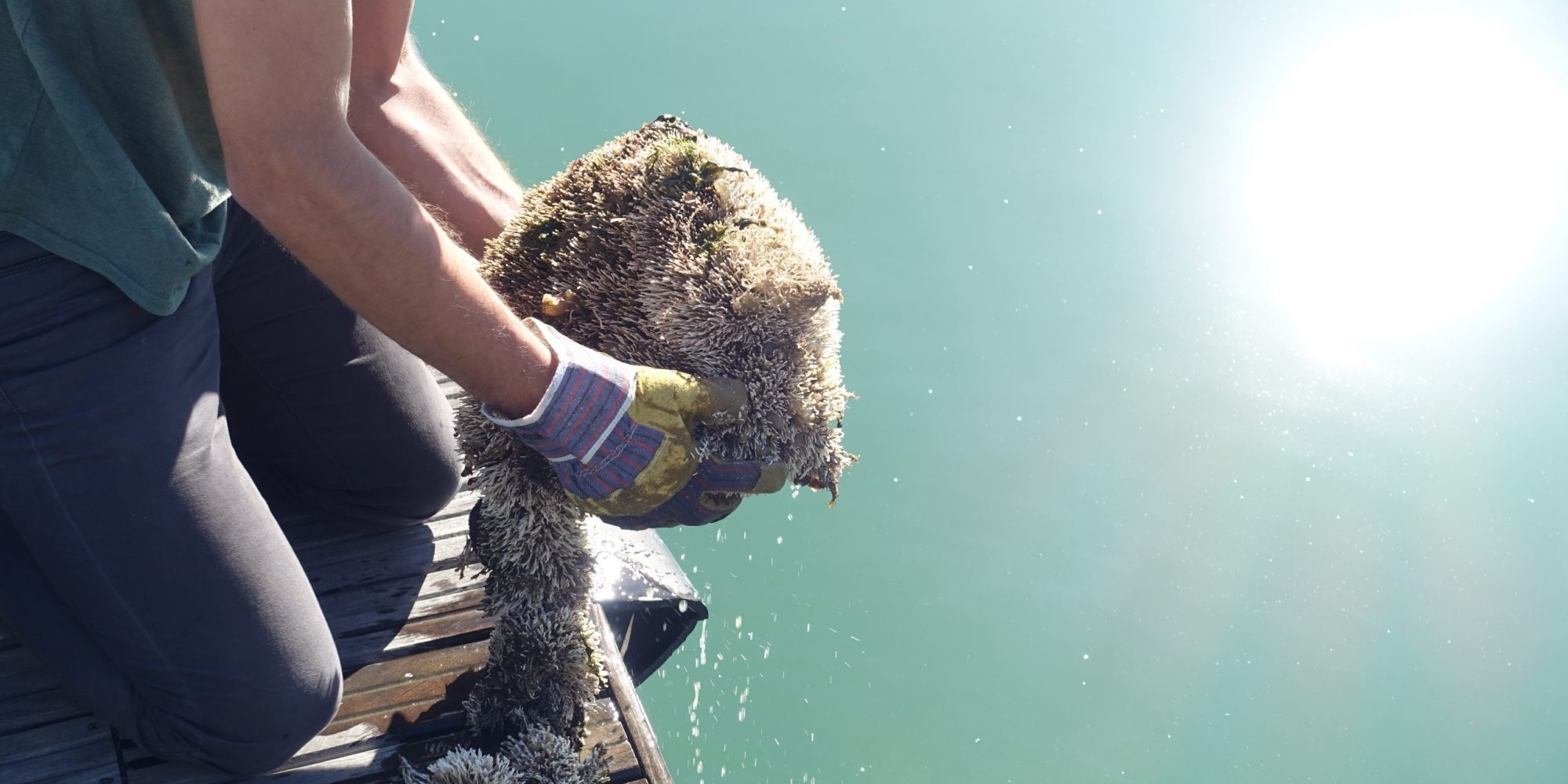
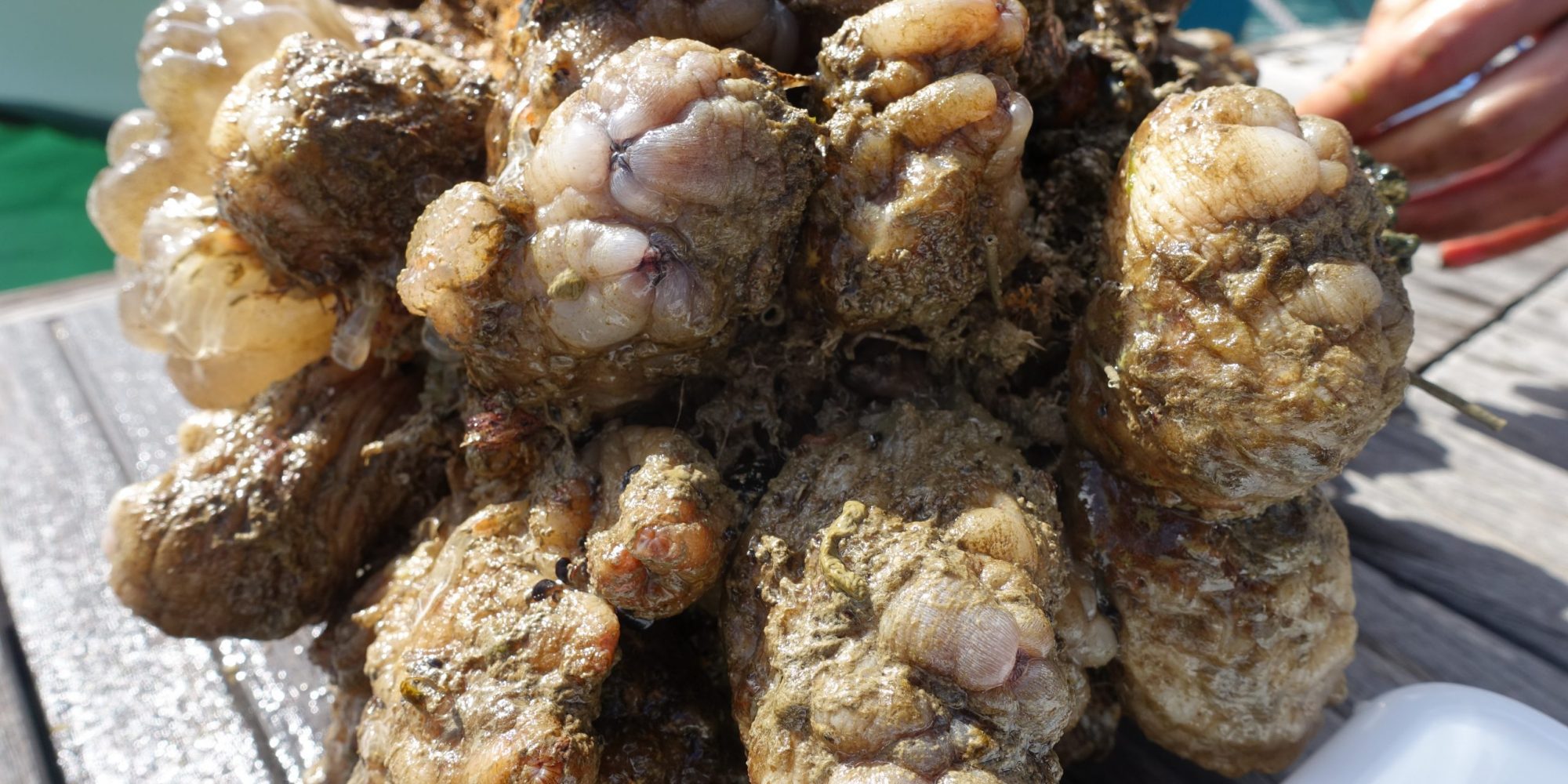
Welcome to BIOFOULING :
:مرحبا بك في بيوفولينج
In recent decades, maritime transportation has become the backbone of commercial shipping operations and responsible over 90% of the world’s trade. The annual revenue for the various maritime shipping fleet operations reached over five hundred billion US dollars annually.
The steady increase of maritime shipping fleet operations required the construction of larger size of ships to make moving goods on these megaships faster, thus saving times and reducing the distances. Unfortunately, in addition to transferring commodities between coastal regions, world shipping can also result in the transfer and introduction of aquatic organisms to new environments. This role of shipping as a pathway for the transfer of IAS is mainly related to two vectors: ballast water and hull biofouling (Link to the main website of the GloFouling project).
The Ballast water is water carried in ships’ ballast tanks to improve stability, balance and trim. It is taken up or discharged when cargo is unloaded or loaded, or when a ship needs extra stability in bad weather. When ships take on ballast water, plants and animals that live in the ocean are also picked up.
While ballast water is essential for safe and efficient modern shipping operations, it may pose serious problems due to the multitude of marine species carried in ships’ ballast water. To tackle this issue in addressing the transfer of invasive aquatic species (IAS) through shipping, The International Convention for the Control and Management of Ships’ Ballast Water and Sediments (BWM Convention) was adopted in 2004 and entered into force on 8 September 2017.
What is biofouling?
Biofouling is described as the undesirable accumulation of microorganisms, algae, plants and animals on submerged structures (especially ships’ hulls). The introduction and establishment of Invasive Aquatic Species (IAS) is considered to be one of the greatest threats to the world’s freshwater, coastal and marine ecosystems. A multitude of marine species may survive to establish a reproductive population in the host environment, becoming invasive, out-competing native species and multiplying into pest proportions.
The global economic impacts of IAS, including through disruption to fisheries, biofouling of coastal industry and infrastructure and interference with human amenity, have been estimated at several hundred million dollars per year. The main vectors for unintentional transfer of non-indigenous species are ships’ ballast water, biofouling of mobile marine structures and aquaculture.
Ship’s biofouling types
Ships biofouling can be divided onto two types:
1.Microscopic marine bio-fouling (or micro-fouling)
These are layer of microorganisms including bacteria, diatoms and the sticky substances it produces. They are known as the colloidal layer, and the microscopic (or small-sized) marine bio fouling can usually be removed by swiping the finger lightly over the surface.
2.Macroscopic marine bio-fouling (macro-fouling)
These marine organisms are macroscopic, and multicellular organisms are prominent, faintly visible to the eye, such as barnacles, large tubular worms, mussels, algae fronds and any other connected or mobile organisms.
References:
The issue
The introduction and establishment of Invasive Aquatic Species (IAS) is considered to be one of the greatest threats to the world’s freshwater, coastal and marine ecosystems. Due to some competitive advantage such as the absence of natural predators, some non-indigenous species (plants, algae, fish, microorganisms, etc.) known as IAS have become dominant and disrupted the biodiversity of their newly adopted habitat.
The main vectors for unintentional transfer of non-indigenous species are biofouling of mobile marine structures, aquaculture, and ships’ ballast water.
Furthermore, biofouling on ships’ hulls increases hull surface roughness, which in turn increases frictional resistance and ultimately increases fuel consumption and total Greenhouse Gas (GHG) emissions.
Biofouling also affects the emerging marine renewable energy structures, such as tidal, wave and wind-based. Biofouling can impair the performance of these structures and increase corrosion increasing the risk of structural damage.
The Projects
The project is a partnership between the International Maritime Organization (IMO) the United Nations Development Programme (UNDP) and the Global Environment Facility (GEF) co assisted by the International Oceanographic Commission of UNESCO (IOC-UNESCO) and the World Ocean Council (WOC).
PERSGA was selected among other seven regional organizations to run this project for the coming five years. The project is funded by GEF for 6.9 Million $US. Four countries, namely: Jordan, Sudan, Djibouti and Somalia, from the Red Sea and Gulf of Aden Region participate in this project. The project aims to protect the marine biodiversity by minimizing the impacts from aquatic Biofouling organisms and support Goal number 14, life below water, of the United Nation Sustainable Development Goals (SDGs).
The Glofouling Partnership project overall objectives
The overall objective of the GloFouling Partnership Project is to build capacity in developing countries for implementing the IMO Biofouling and other relevant guidelines for biofouling management and to catalyse overall reductions in the trans-boundary introduction of biofouling-mediated IAS with additional benefits in the reduction of GHG emissions from global shipping.
What are the environmental threats and socio-economic impacts?
The environmental threats and socioeconomic impacts that could be derived from the transfer of IAS can be summarized below.
Environmental threats:
- Damage to commercial and recreational fishery and aquaculture
- Modification of physical structures
- Alteration of overall habitat dynamics and fundamental changes in ecosystems
- Predation on and competition with native species
Socio economic impacts:
- Removal of natives’ species from recreational fishing areas (e.g parasite or viral infection). Threat to aquaculture operations by fouling structures , equipment
- Damage to coastal infrastructures (tourism, water cooling intakes and heat exchangers for power plants, desalination plants intake, etc). Reduce value of waterfront properties. Biofouling of commercial craft and standing/fixed structures
- Reduction in amenity value. Loss of tourist attractions (beach deterioration/change). Restricted access for coastal recreation. Bioturbation and erosion from burrowing fauna
- Removal of traditional food and recreational species. Collapse in biodiversity toward a monoculture habitat. Over-exploitation of primary productivity collapsing native food chains.
Glofouling Partnership project communication strategy
- The GloFouling Partnership project coordination unit in collaboration with the IOC-UNESCO, the International Maritime Organization (IMO), and World Maritime University (WMU) has implemented a multi-faceted communication strategy which includes several on-line tools and social media platforms, such as conferences, seminars, video clips animations, e-delivery training courses.
- All these on-line information webinars series are available in English language on the GloFouling Project website. https://www.glofouling.imo.org/
Project components
The work of the GEF-UNDP-IMO GloFouling Project is divided into five major components:
- Component 1: Assessing relevant national and regional policies, legislation and institutions to identify gaps, inconsistencies and conflicts, and, as appropriate, adopt LPIR measures to minimise the risk of IAS transferred through biofouling.
- Component 2: Developing capacity for the implementation of the IMO Biofouling Guidelines through national capacity building, training and technical support, undertaking focused and sustained communications and awareness-raising and executing Pilot/ Demonstration Projects in selected ports and marine protected areas.
- Component 3: Building on the existing partnership concepts and mechanisms, established through GEF’s GloBallast partnerships, and expanding the existing GIA framework to bring active private sector participation at global, regional, national and local levels, to ensure the development of innovative technological and other solutions and financial sustainability for the control and management of biofouling and for the effective involvement of the relevant stakeholders.
- Component 4: Knowledge management and developing an institutional and procedural approach for monitoring and evaluation of biofouling management and control measures.
- Component 5: Adaptive project management and coordination for implementation, monitoring and evaluation.
GloFouling Partnerships project’s outputs
Component 1: Assessing relevant national and regional policies, legislation and institutions to identify gaps, inconsistencies and conflicts, and, as appropriate, adopt Legal, Policy and Institutional Reforms (LPIR) to minimise the risk of Invasive Aquatic Species (IAS) transferred through biofouling
Component 2: Developing capacity for the implementation of the 2011 Biofouling Guidelines through national capacity building, training and technical support, undertaking focused and sustained communications and awareness-raising and executing Pilot/ Demonstration Projects in selected ports and marine protected areas
Component 3: Building on the existing partnership concepts and mechanisms, established through GEF’s GloBallast partnerships, and expanding the existing Global Industry Alliance framework (GIA) to bring active private sector participation at global, regional, national and local levels, to ensure the development of innovative technological and other solutions and financial sustainability for the control and management of biofouling and for the effective involvement of the relevant stakeholders
Component 4: Knowledge management and developing an institutional and procedural approach for monitoring and evaluation of biofouling management and control measures
Component 5: Adaptive project management and coordination for implementation, monitoring and evaluation
Output 1.1.4: Regional partnerships and cooperation agreements developed to address marine biofouling issues.
Activities falling under Output 1.1.4 will be directed towards ensuring that measures adopted by LPCs are developed in coordination with broader regional biofouling management policies and agreements overseen by Regional Coordinating Organizations (RCOs). In particular, RCOs will aspire towards the introduction of consistent biofouling management measures across broader Large Marine Ecosystems (LMEs). Activities will work towards regionally harmonized biofouling management arrangements and establishing sustainable governance and support mechanisms to maintain effective management beyond the life of the GloFouling
Partnerships Project. Two Activities are identified within this Output:
Activity 1.1.4.1: Set up Regional Task Forces (RTFs) in strategic regions.
The RCOs will each establish a new RTF or utilize appropriate existing task forces with representation from all countries in the region. The aims of creating RTFs are:
- To serve as a mechanism to expand Partnering Countries’ interest and involvement in GloFoulingPartnerships.
- To raise issues and concerns, and generate regional status reports, for consideration at the GPTF meetings.
- To provide an opportunity for PCs to gather knowledge on the status of the IMO Biofouling Guidelines,including guidance on implementing the Guidelines.
- To develop recommendations for regional coordination on biofouling management issues and develop a Regional strategy for biofouling management (Activity 1.1.4.2).
- To identify mechanisms for national and regional sustainability on biofouling management issues after the conclusion of GloFouling Partnerships.
Activity 1.1.4.2: Draft regional strategies in strategic and outreach regions.
RTFs in each strategic region will examine options for regional cooperation and the coordination of biofouling management measures and develop a strategy to develop regional harmonization of biofouling management in each strategic region. Regional strategies should consider NBMS developed under the GloFouling Partnerships Project as well as biofouling management practices and approaches implemented by other nations both regionally and globally.
Based on the work conducted in strategic regions, the GloFouling Project will also engage other regions
(outreach regions) to examine options for regional cooperation and the coordination of biofouling management measures and develop a strategy to encourage regional harmonization of biofouling management in each outreach region. Regional strategies should consider NBMS developed under the GloFouling Partnerships Project as well as biofouling management practices and approaches implemented by other nations both regionally and globally.
References: https://www.glofouling.imo.org/.
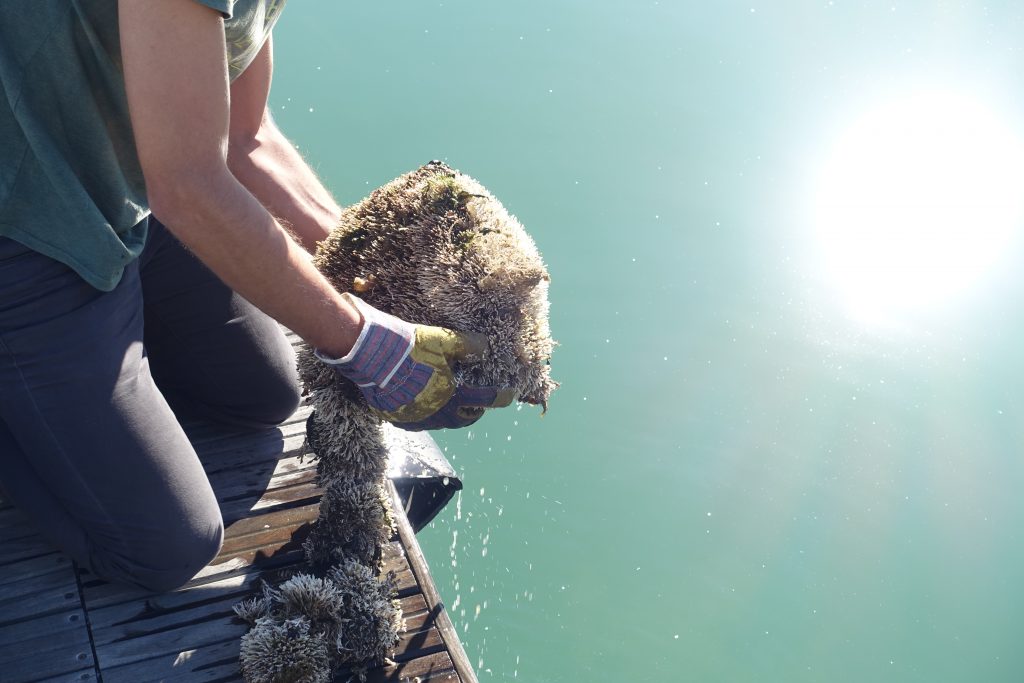
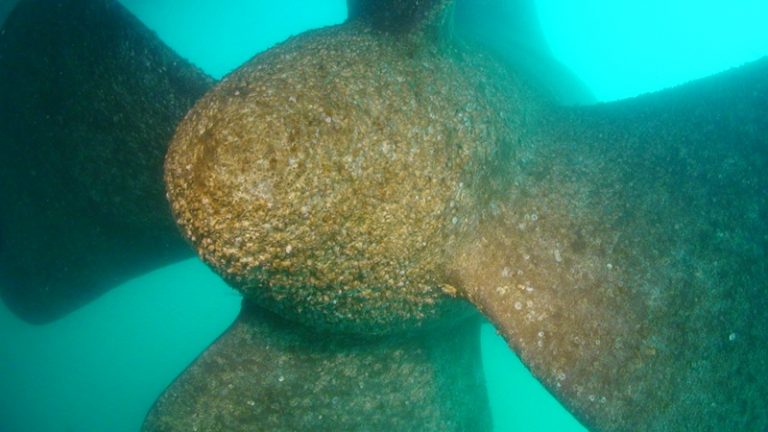
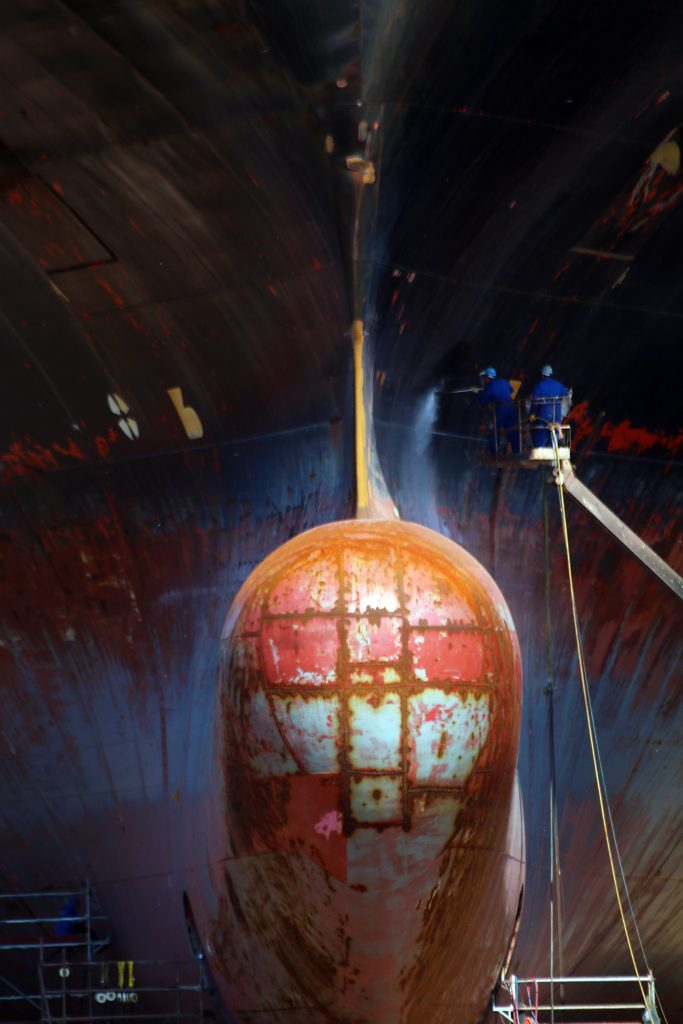
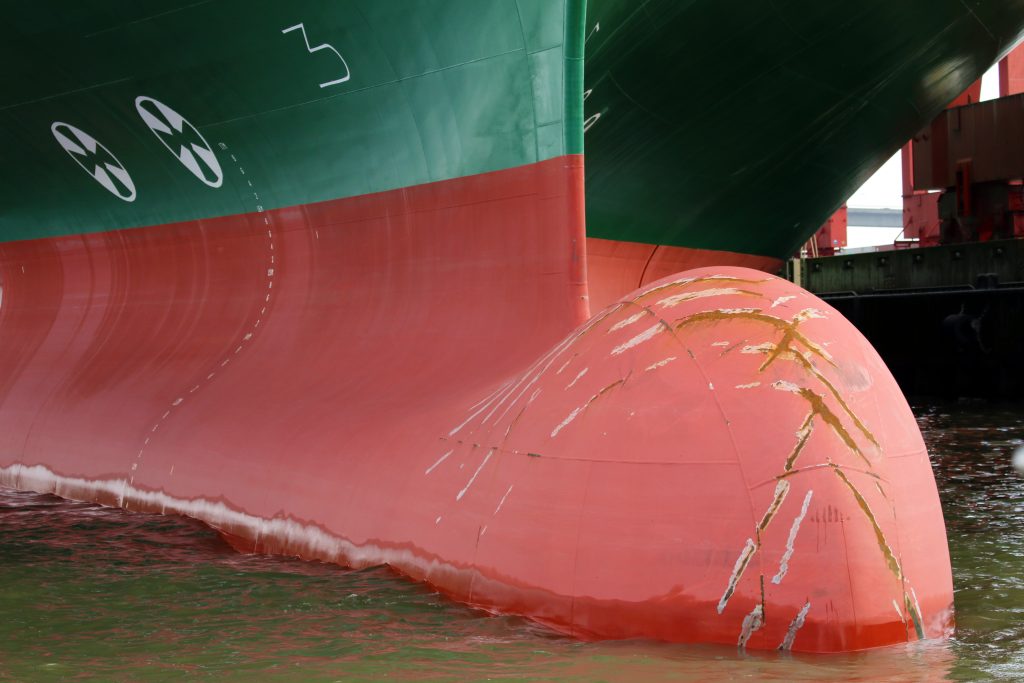
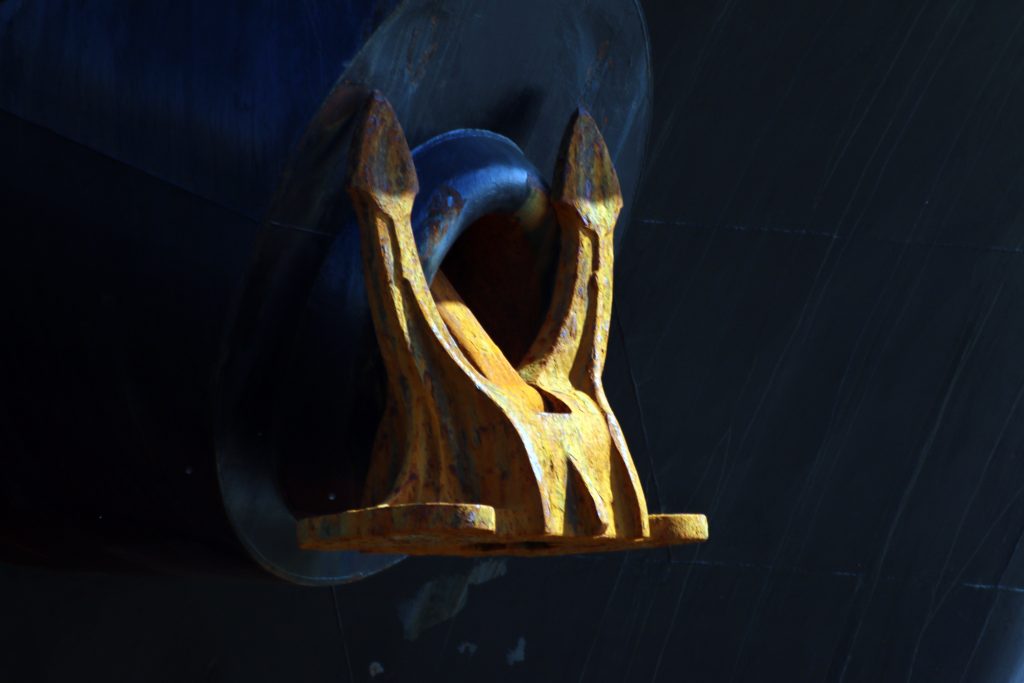
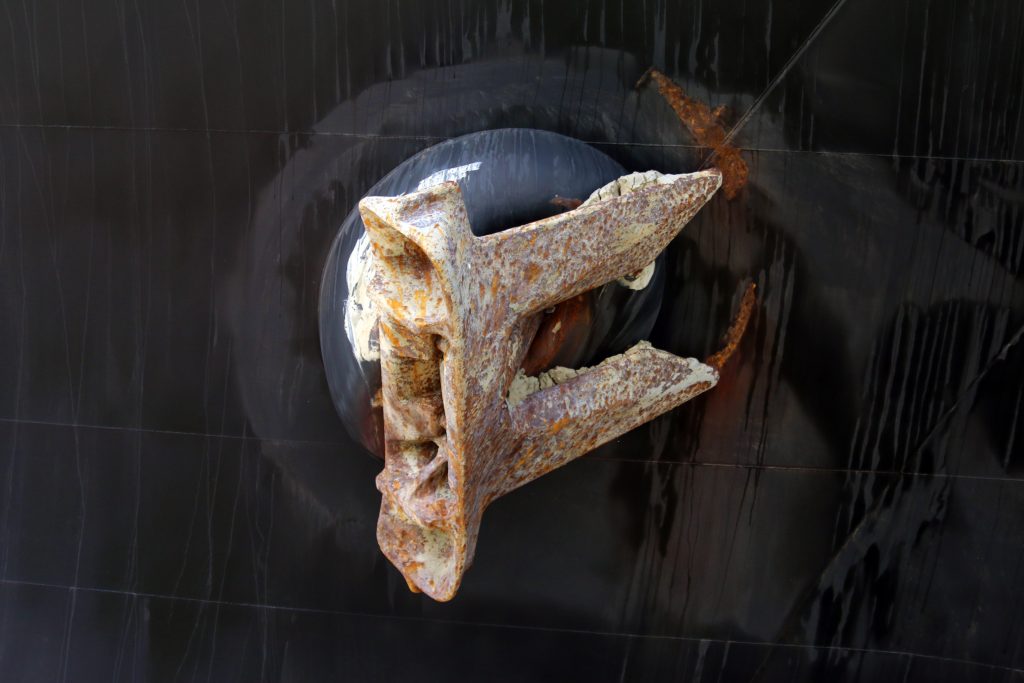
Pathways related to Biofouling
